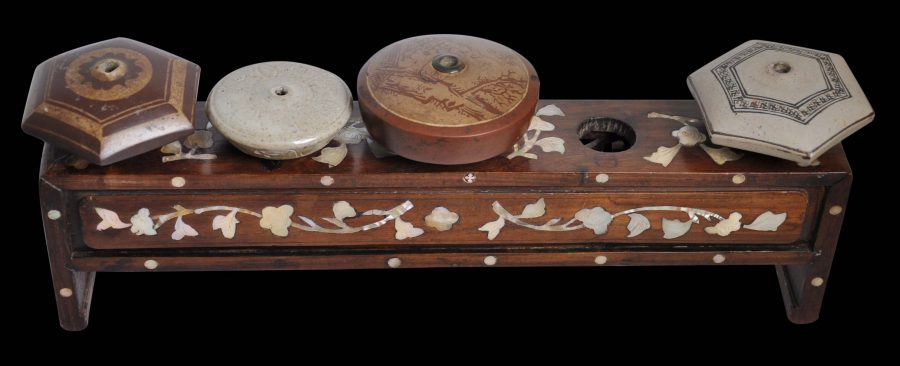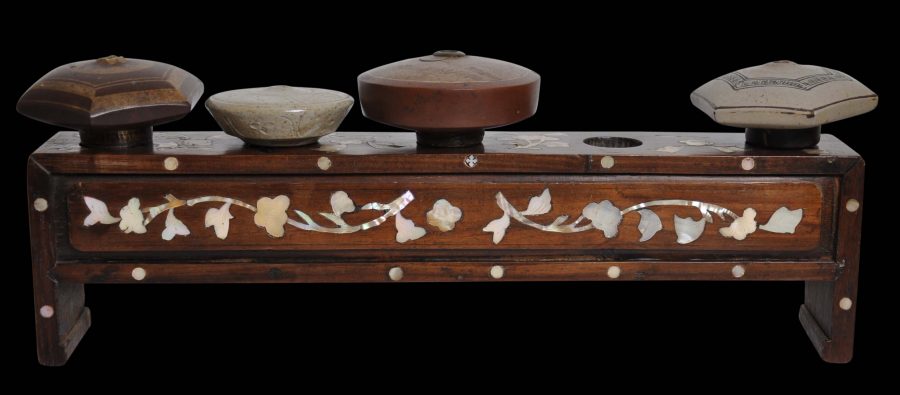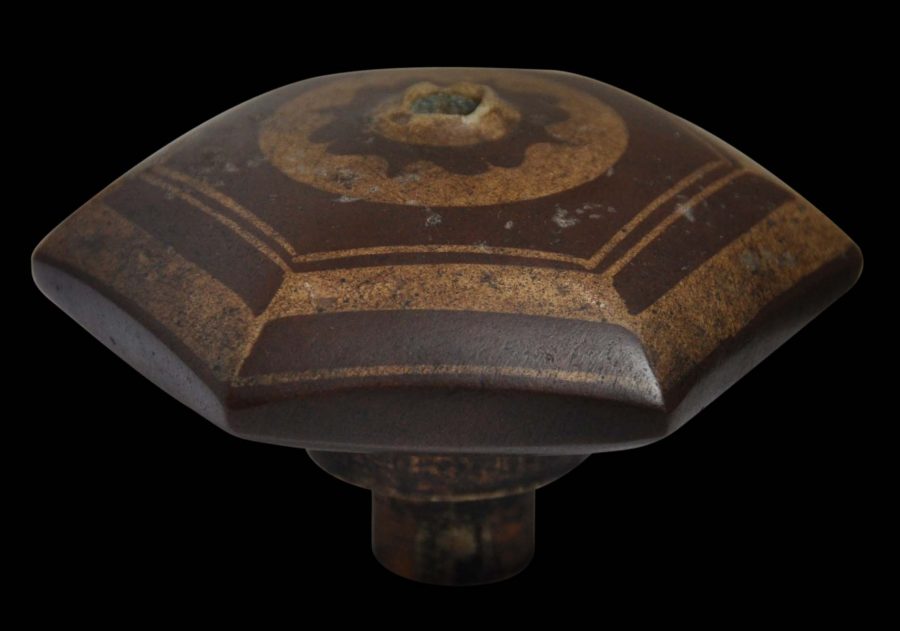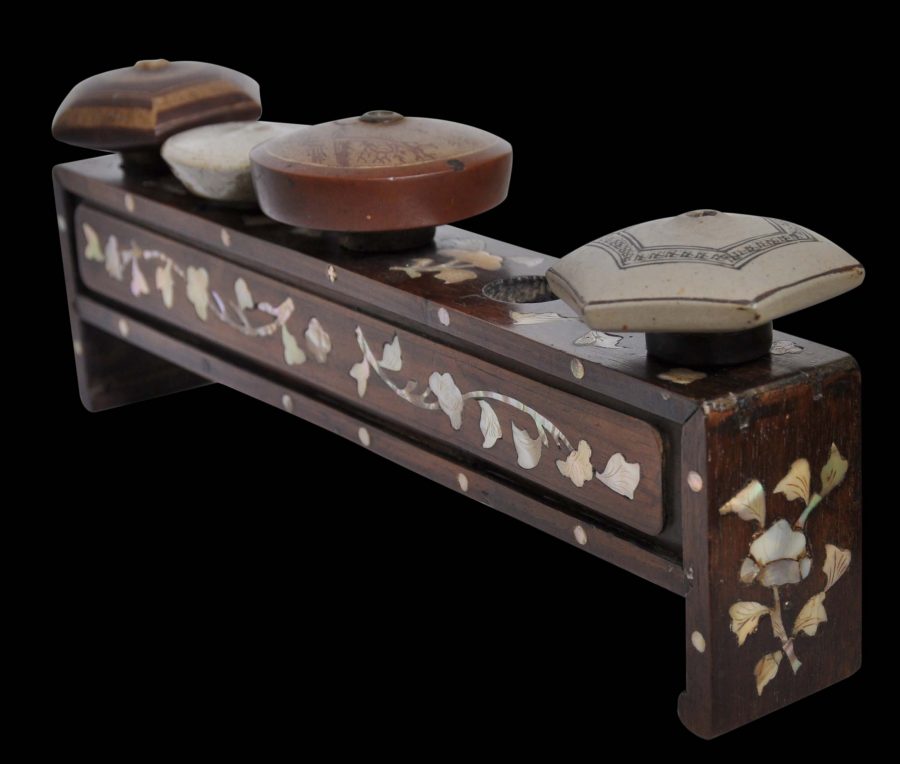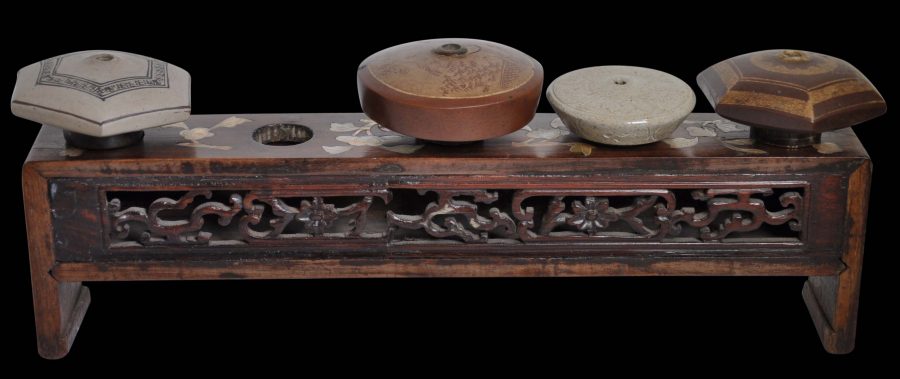Opium usage was associated among wealthier users with elegant accouterments. The pipe was accompanied by a detachable pipe head and a user might have multiple heads, each a miniature work of art. And with multiple heads came the need for display stands, such as the example here.
This one, with space or sockets for five pipe heads is made of rosewood inlaid with mother-of-pearl in designs suggestive of sprays plum blossom. The reverse has been fitted with a carved and pierced panel (some loss to the carving.)
The back of the stand has a space for a dross tray, perhaps a metal pan, onto which the ash and residue inside the pipe heads could drip when not being used.
The stand is accompanied by four fine pipe heads, each of either stoneware or ceramic, and with a characteristic ‘door-knob’ shape with a tiny aperture to the top over which the opium ball was heated.
Three of the four have a maker’s or retailer’s mark on their undersides.
Most opium pipes and equipment available today are reproduction pieces – it is rare now for genuine examples to appear on the market.
Two of the pipe heads have minor use-related chipping.
References
Bertholet, F.M., Opium: Art et Histoire d’un Rituel Perdu, Fonds Mercator, 2007.
Delalande, D. & E., Memoires d’Opiums/Memories of Opium, Somogy editions, 2011.
Lee, P., Opium Culture: The Art & Ritual of the Chinese Tradition, Park Street Press, 2006.
Martin, S., The Art of Opium Antiques, Silkworm Books, 2007.


